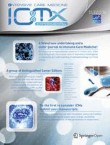Inferior vena cava distensibility from subcostal and trans-hepatic imaging using both M-mode or artificial intelligence: a prospective study on mechanically ventilated patients
Variation of inferior vena cava (IVC) is used to predict fluid-responsiveness, but the IVC visualization with standard sagittal approach (SC, subcostal) cannot be always achieved. In such cases, coronal trans-...
